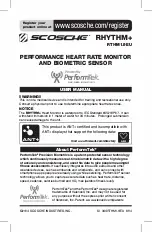
4
LDB-ST1LE Batcher
Operating Mode
The Flow Computer can be thought of as making
a measurement of flow and then performing
calculations which are then updated periodically
on the display as rate and total. The pulse output,
analog output and the alarm relays are also
updated. The cycle then repeats itself.
Step 1: Update the measurements of input signals-
Raw Input Measurements are made at each
input.
Step 2 : Compute the Volumetric Flow-
Uncompensated flow is the term given to the flow in
volume units. The value is computed based on the
flowmeter input type selected and augmented by
any performance enhancing linearization that has
been specified by the user.
Step 3: Check Flow Alarms-
The flow alarm functions have been assigned to
flow rate during the setup of the instrument. A
comparison is now made by comparing the current
flow rates against the specified hi and low limits.
Step 4: Compute the Flow Totals by Summation-
A flow total increment is computed for each flow
rate. This increment is computed by dividing the
pulses by the K-Factor and then summing. The
totalizer format also includes provisions for total
rollover.
Step 5: Total Preset Comparisons-
The total associated with a preset function is then
compared against the corresponding preset value
and any required control actions taken.
Step 6: Pulse Output Service-
The pulse output is next updated by scaling the total
increment which has just been determined by the
pulse output scaler and summing it to any residual
pulse output amount.
Step 7: Compute the Analog Output-
This designated flow rate value is now used to
compute the analog output.
Step 8: Update Display and Printer Output-
The instrument finally runs a task to update the
various table entries associated with the front panel
display and serial outputs.
Setup Mode
The setup mode is password protected by means
of a numeric lock out code established by the user.
In addition, a secret, manufacturers numeric unlock
entry sequence is available.
The system also provides a minimum implementation
of an “audit trail” which tracks significant setup
changes to the unit. This feature is increasingly
being found of benefit to users or simply required
by Weights and Measurement Officials in systems
used in commerce, trade, or “custody transfer”
applications.
A Worksheet is provided to assist the user in setting
up the instrument. An Easy Setup (EZ Setup)
feature is offered in the setup menu. The EZ Setup
routine is a quick and easy way to configure the unit
for the most commonly used instrument functions.
The setup mode has numerous subgrouping of
parameters needed for flow calculations. There is
a well conceived hierarchy to the setup parameter
list. Selections made at the beginning of the setup
affect offerings further down in the lists.
In the setup mode, the flow computer activates the
correct setup variables based on the instrument
configuration, the flow equation, and the hardware
selections, the flow transmitter type, and meter
enhancements (linearization) options selected. All
required setup parameters are enabled. All setup
parameters not required are suppressed.
A help line prompt is provided for each entry. In
addition a help message is available which may be
accessed by depressing the “HELP” key.
Also note that in the setup mode are parameter
selections which have preassigned industry
standard values. The unit will assume these values
unless they are modified by the user.









































